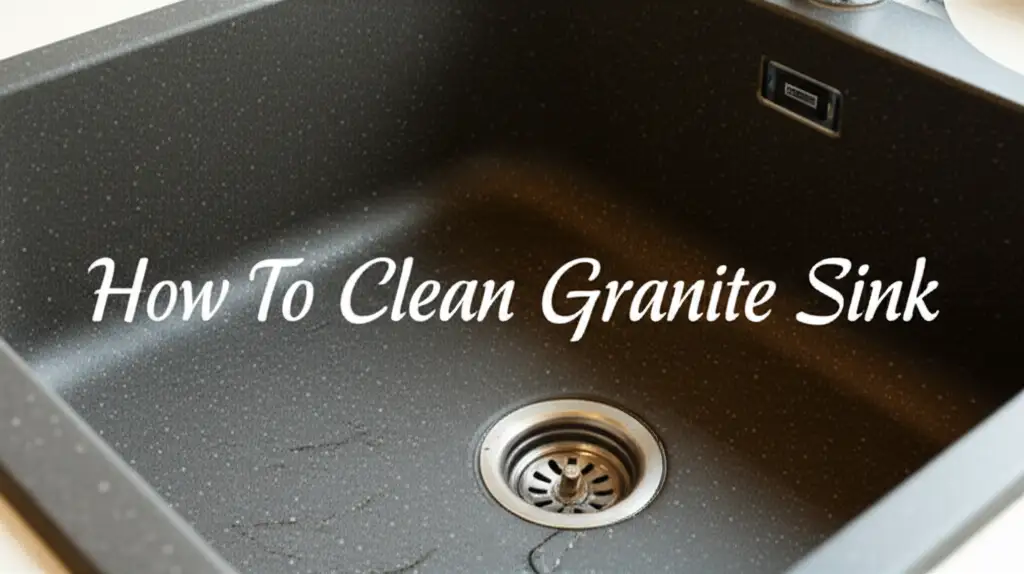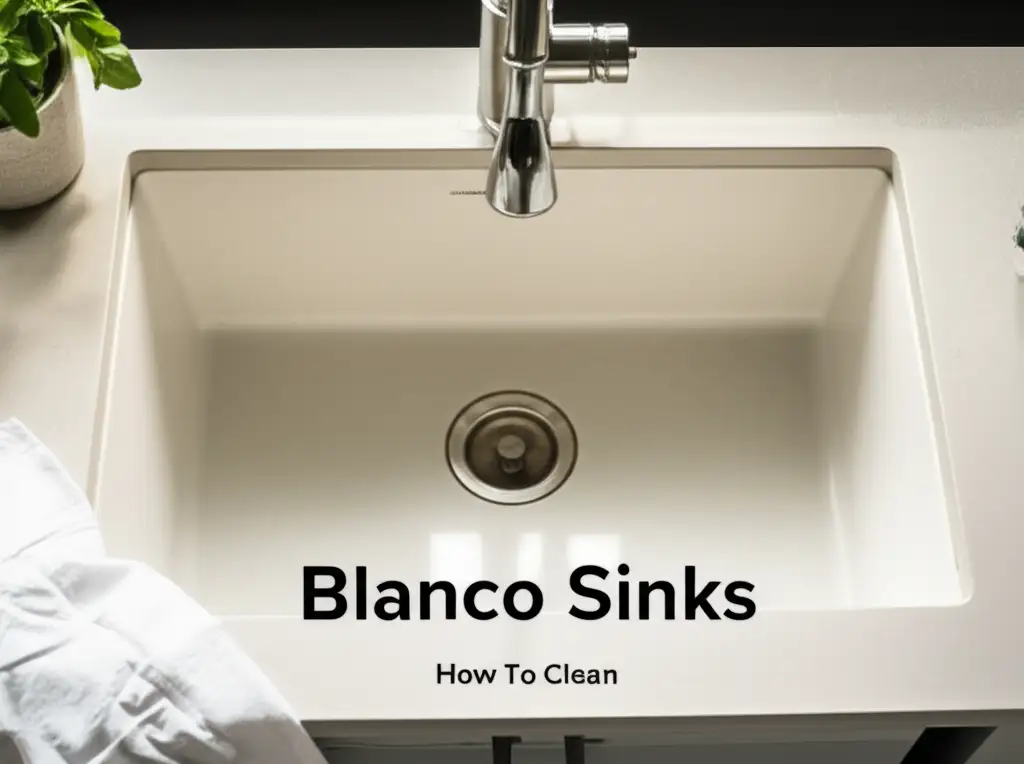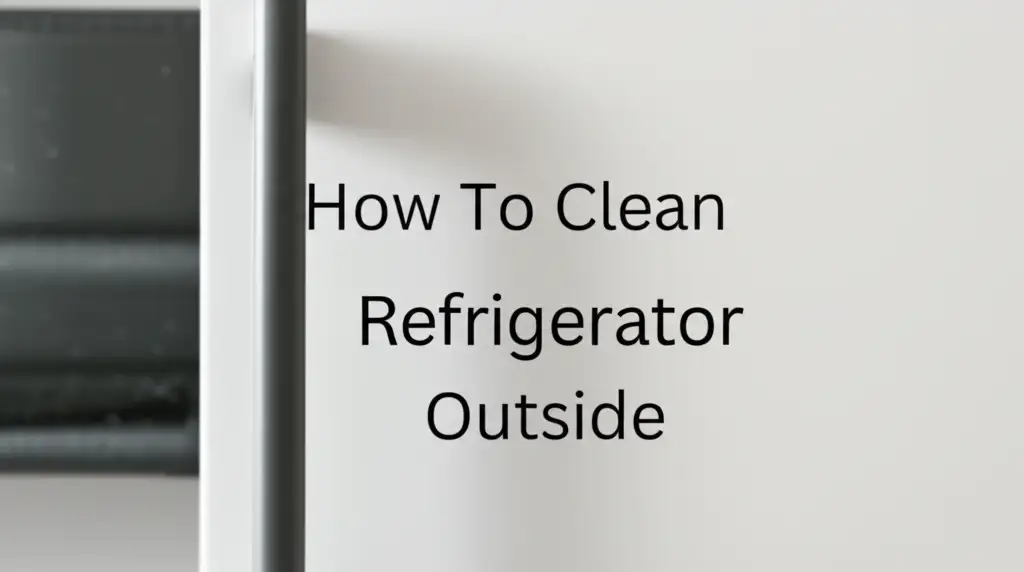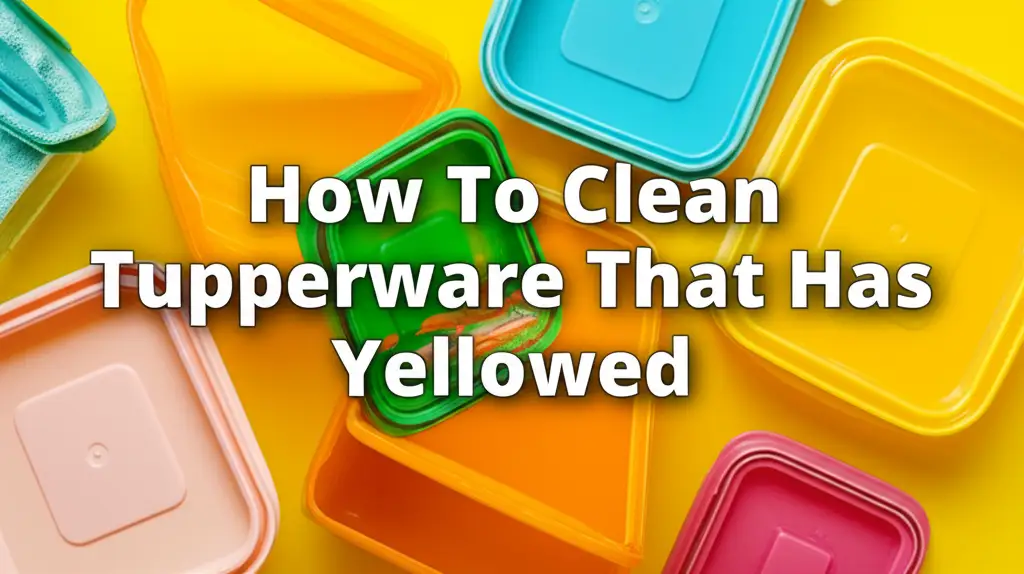· Kitchen Cleaning · 13 min read
How To Clean White Ceramic Sink

Restore Your Shine: How To Clean White Ceramic Sink
A pristine white ceramic sink is the heart of many kitchens. Its bright surface instantly elevates the room’s look. However, daily use can quickly dim that sparkle. Food debris, hard water, and everyday grime often leave behind stubborn stains. Keeping your white ceramic sink clean feels like a constant battle.
But what if I told you it does not have to be? Maintaining your white ceramic sink is easier than you think. You just need the right approach and a few simple tools. This article will show you effective methods to clean white ceramic sink surfaces. We will cover everything from daily care to tackling tough stains. Get ready to bring back the brilliant shine to your sink.
Takeaway:
- Regular daily wiping prevents major stain buildup.
- Baking soda and vinegar offer a gentle, effective cleaning solution.
- Hydrogen peroxide tackles tougher discoloration and brightens surfaces.
- Always test stronger cleaners in a hidden spot first.
- Prevention is key; rinse after use and address spills quickly.
To clean a white ceramic sink, you need a few common household items. Start with gentle dish soap and warm water for daily cleaning. For tougher stains, use a paste of baking soda and water. Apply it, let it sit, then scrub gently. You can also use white vinegar for hard water spots. Always rinse thoroughly to restore shine.
Understanding Your White Ceramic Sink
White ceramic sinks are beautiful. They add elegance to any kitchen. Ceramic material is durable and heat resistant. It is also non-porous when glazed properly. This makes it a great choice for kitchens.
Despite its durability, the white surface shows dirt easily. It highlights every smudge and stain. Common culprits include coffee, tea, food dyes, and even rust from metal pans. Hard water deposits also leave mineral buildup. These elements combine to dull your sink’s bright finish. Understanding these factors helps you clean more effectively. You will know what to look for and how to address specific issues.
The Appeal and Challenges of White Ceramic
Many homeowners choose white ceramic for its classic look. It brightens kitchens and creates a clean aesthetic. The smooth glaze feels pleasant to the touch. This material is popular for a good reason.
However, white surfaces show dirt more readily. This means they need more frequent attention. Stains can set in if left untreated. Regular cleaning prevents these problems from becoming severe. It keeps your sink looking new for longer.
Gathering Your Essential Cleaning Supplies
Before you start cleaning, gather your tools. Having everything ready saves time. You also ensure you have the right supplies for the job. This makes the cleaning process smoother and more efficient.
You will need some basic items for daily care. For deeper cleaning, you might need a few more specialized products. Most of these items are already in your home. This list ensures you are prepared for any cleaning task.
Must-Have Tools and Ingredients
Here are the supplies I recommend for cleaning your white ceramic sink:
- Soft cloths or sponges: These prevent scratching the sink’s surface. I always use a non-abrasive sponge.
- Dish soap: Gentle dish soap is perfect for everyday grime.
- Baking soda: A natural abrasive that is gentle yet effective. It tackles many types of stains.
- White vinegar: Great for dissolving hard water stains and odors. I keep a spray bottle of it handy.
- Hydrogen peroxide: Useful for brightening and disinfecting. It works well on yellowish stains.
- Lemon juice (optional): A natural alternative for light stains and fresh scent.
- Rubber gloves: Protect your hands from cleaning agents.
- Old toothbrush or small brush: For scrubbing tight corners and grout lines if applicable.
- Paper towels or microfiber cloth: For drying and polishing.
Avoid harsh abrasive cleaners or steel wool pads. These can scratch the ceramic glaze. Scratches make the sink more prone to future staining. Always choose gentle options first.
Daily Maintenance for a Sparkling Sink
Daily cleaning is your best defense against tough stains. A quick wipe-down each day keeps your white ceramic sink looking fresh. It prevents food particles and liquid spills from drying and setting. This simple routine saves you a lot of effort in the long run.
Think of it as a preventative measure. It takes only a few minutes. This small effort makes a big difference in maintaining your sink’s pristine appearance. It stops problems before they even start.
Simple Steps for Everyday Cleanliness
Follow these steps daily to keep your sink clean:
- Rinse thoroughly: After each use, rinse the sink with warm water. This washes away loose food bits and liquids. I always make sure no residue is left behind.
- Wipe down: Use a soft cloth or sponge with a little dish soap. Wipe down the entire sink surface. This removes any film or light grime.
- Dry completely: Use a clean, dry cloth to wipe the sink dry. This prevents water spots and mineral buildup. It also helps maintain the bright white finish. This step is crucial for preventing hard water stains. Many people forget to dry their sink. Hard water stains on stainless steel sinks are a common problem that drying helps prevent. You can learn more about how to remove hard water stains from stainless steel sinks if you have those as well.
- Quick wipe of the faucet: Do not forget the faucet and handles. Wipe them down to remove fingerprints and water spots. This keeps the whole area looking neat.
This routine only takes a couple of minutes. It makes a significant impact on your sink’s appearance. It also reduces the need for frequent deep cleaning.
Tackling Common Stains on White Ceramic Sinks
Even with daily care, some stains can appear. White ceramic is prone to various discoloration issues. These include food stains, rust marks, and hard water spots. Each type of stain requires a slightly different approach.
Knowing how to address these common problems saves you frustration. You can target the stain effectively. This brings back the uniform white look of your sink. Do not let these common culprits ruin your sink’s beauty.
Effective Solutions for Stubborn Marks
Here are methods for common stains:
- Food Stains (Coffee, Tea, Wine): These are frequent offenders. They leave dark rings.
- Baking Soda Paste: Mix baking soda with a little water to form a thick paste.
- Apply the paste directly to the stain. Spread it evenly over the discolored area.
- Let it sit for 15-30 minutes. For tough stains, leave it for an hour or more.
- Gently scrub with a soft brush or sponge. The baking soda acts as a mild abrasive.
- Rinse thoroughly with water. Repeat if necessary.
- Rust Stains: These often come from metal pots, cans, or rusty pipes.
- Lemon Juice and Salt: Sprinkle salt over the rust stain.
- Squeeze fresh lemon juice over the salt.
- Let it sit for several minutes. The acid in the lemon juice helps dissolve the rust.
- Scrub with a soft brush.
- Rinse well. You can also try white vinegar for similar results, as it is acidic. It is also good for cleaning sink drains, as you can see in how to clean sink drain with vinegar.
- Hard Water Stains: White, chalky buildup comes from minerals in your water.
- White Vinegar: Soak paper towels in undiluted white vinegar.
- Lay the soaked paper towels over the hard water stains.
- Let them sit for at least 30 minutes, or longer for severe buildup.
- Remove the paper towels and scrub with a non-abrasive sponge.
- Rinse thoroughly. For hard water stains on other ceramic surfaces, the same method applies. This is similar to how you might clean ceramic tile shower walls.
- Overall Dullness or Yellowing: Over time, the sink might lose its bright white.
- Hydrogen Peroxide: Pour hydrogen peroxide onto the dull areas.
- Let it sit for 15-30 minutes. It acts as a bleaching agent.
- Scrub lightly and rinse completely. Hydrogen peroxide is also used in how to clean white shoes with hydrogen peroxide for general brightening.
- Always rinse the sink thoroughly after using any of these methods. This removes all cleaning residues.
Deep Cleaning Your White Ceramic Sink
Sometimes your sink needs more than a quick wipe or targeted stain removal. A deep clean restores its original brilliance. This process tackles ingrained dirt and unseen grime. It ensures your sink is not only visually clean but also truly hygienic.
Deep cleaning is something I recommend doing periodically. It helps maintain the overall cleanliness of your kitchen. It also extends the life and appearance of your beautiful white ceramic sink.
Comprehensive Cleaning Methods
Here is how to perform a deep clean:
- Clear the Sink: Remove everything from the sink. This includes dish racks, sponges, and any drain covers.
- Rinse Thoroughly: Give the sink a good rinse with warm water. This removes loose debris.
- Baking Soda Scrub: Sprinkle a generous amount of baking soda over the entire sink surface.
- Add a small amount of water to create a paste.
- Use a soft sponge or cloth to scrub the paste into the sink. Work in circular motions.
- Pay extra attention to corners and edges. The baking soda helps lift dirt and stains.
- Let the paste sit for 10-15 minutes.
- Vinegar Boost: While the baking soda paste is still on the sink, spray white vinegar over it.
- The vinegar reacts with the baking soda, creating a fizzing action. This helps loosen stubborn grime.
- Let it fizz for a few minutes.
- Scrub again with the sponge.
- Hydrogen Peroxide for Brightness (Optional): If your sink still looks dull or has lingering yellowish tints, follow with hydrogen peroxide.
- Rinse away the baking soda and vinegar mixture.
- Pour hydrogen peroxide over the entire sink surface.
- Let it sit for 20-30 minutes. It will help brighten and sanitize the sink.
- Final Rinse and Dry: Rinse the sink thoroughly with warm water. Ensure all cleaning agents are washed away.
- Dry the sink completely with a clean, dry cloth. This prevents water spots.
- Your sink will now look sparkling clean.
Natural Cleaning Alternatives for a Healthy Home
Many people prefer to use natural cleaning products. They are often safer for your family and the environment. Fortunately, several natural options work wonders on white ceramic sinks. These methods are effective and gentle.
Using natural alternatives reduces exposure to harsh chemicals. It also supports a healthier home environment. You can achieve a spotless sink without strong fumes or synthetic ingredients. I always try these options first.
Eco-Friendly Solutions for Your Sink
Consider these natural choices:
- Lemon and Salt: This combination is excellent for light stains and minor rust spots. The citric acid in lemon acts as a natural bleach and deodorizer. Salt provides a gentle abrasive.
- Cut a lemon in half.
- Sprinkle salt on the stained area.
- Rub the lemon half directly onto the salt and stain.
- Let it sit for 5-10 minutes.
- Rinse thoroughly.
- Borax: Borax is a natural mineral that acts as a powerful cleaner and deodorizer.
- Mix borax with a little water to form a paste.
- Apply the paste to stains.
- Let it sit for 15-30 minutes.
- Scrub with a soft cloth or sponge.
- Rinse completely. Borax is safe but avoid ingestion.
- Cream of Tartar: This common baking ingredient can be surprisingly effective for light stains and dullness.
- Mix cream of tartar with a few drops of hydrogen peroxide or lemon juice to make a paste.
- Apply to the stained areas.
- Let it sit for 10-15 minutes.
- Gently scrub and rinse. These natural options offer effective cleaning. They help you maintain a bright, clean sink without harsh chemicals. This ensures your kitchen remains a healthy space.
Preventing Future Stains and Maintaining Luster
Prevention is always better than cure. Once you have a clean white ceramic sink, you want to keep it that way. Implementing a few simple habits can drastically reduce new stains. These habits protect your sink’s finish.
Consistent care saves you time and effort in the long run. It also helps your beautiful white ceramic sink maintain its luster. Follow these tips to enjoy a continuously sparkling kitchen focal point.
Best Practices for Long-Term Sink Care
Here are my top tips for prevention:
- Rinse Immediately: After using the sink, always rinse away food debris, coffee, tea, and other liquids. Do not let anything sit and dry on the surface. This is especially important for things like coffee grounds or tomato sauce.
- Wipe Dry: After rinsing, wipe the sink dry with a clean cloth. This prevents hard water spots and mineral buildup. This simple step is critical for maintaining shine. It also helps prevent problems that require more intensive cleaning, such as after handling raw chicken, which emphasizes the need for thorough cleaning and drying to prevent bacterial growth and stains.
- Use a Sink Mat or Grid: Place a silicone sink mat or metal grid at the bottom of your sink. This protects the ceramic from scratches and chips. It also prevents pots and pans from directly contacting the surface, reducing the risk of metal marks and rust.
- Avoid Abrasive Cleaners: Never use steel wool, abrasive scrubbing pads, or harsh chemical cleaners. These can scratch the ceramic glaze. Once scratched, the sink becomes more porous and prone to staining.
- Address Spills Promptly: If you spill something like wine, coffee, or food coloring, clean it up immediately. The quicker you act, the less likely it is to stain.
- Regular Light Cleaning: Stick to your daily wiping routine. This keeps minor grime from accumulating.
- Be Mindful of Metal: Avoid leaving metal objects (like cast iron pans or rusty cans) in the sink for extended periods. They can leave rust marks that are hard to remove.
- Consider Water Softener: If you have very hard water, consider installing a water softener for your home. This reduces mineral content, preventing hard water stains on all fixtures.
By following these preventative measures, you can keep your white ceramic sink looking immaculate. Your efforts will be rewarded with a continuously bright and inviting kitchen space.
FAQ Section
Q1: Can I use bleach to clean my white ceramic sink?
A1: Yes, you can use diluted bleach on a white ceramic sink for tough stains or sanitization. Mix a small amount of bleach with water. Apply it to the stain, let it sit for a few minutes, then rinse thoroughly. Always test a small, inconspicuous area first. Ensure good ventilation when using bleach.
Q2: How do I remove black marks from my white ceramic sink?
A2: Black marks, often from metal rubbing on ceramic, can be removed with a baking soda paste. Apply the paste to the mark, let it sit for 10-15 minutes, then scrub gently with a non-abrasive sponge. For stubborn marks, a melamine foam eraser (like a Magic Eraser) can also be effective.
Q3: What should I avoid using on a white ceramic sink?
A3: Avoid abrasive cleaners like scouring powders or steel wool pads. These can scratch the glaze. Also, strong acids like rust removers not specifically designed for ceramic can damage the surface. Do not use highly acidic or alkaline drain cleaners directly on the sink.
Q4: How often should I deep clean my white ceramic sink?
A4: Deep cleaning frequency depends on usage. For daily use, I recommend deep cleaning your white ceramic sink once a month. If your sink gets very heavy use or frequent stains, you might do it every two weeks. Regular daily maintenance reduces the need for frequent deep cleaning.
Q5: Will food coloring permanently stain my white ceramic sink?
A5: Food coloring can leave strong stains if left for too long. However, they are usually not permanent on a glazed ceramic sink. Treat these stains quickly with a baking soda paste. For more stubborn coloring, hydrogen peroxide can help lift the dye. Rinse and dry quickly.
Conclusion
Keeping your white ceramic sink sparkling clean does not have to be a daunting task. With the right tools and a consistent approach, you can maintain its beautiful appearance. We have covered everything from simple daily wiping to tackling tough stains with natural solutions. Remember, gentle care is key to preserving the glaze.
I hope this guide helps you restore and maintain the pristine beauty of your white ceramic sink. Embrace these tips to ensure your kitchen’s focal point always shines brightly. A clean sink makes a big difference in the overall feel of your home. You now have all the knowledge to tackle any cleaning challenge your sink throws at you.
- ceramic sink cleaning
- white sink stains
- kitchen sink maintenance
- stain removal
- home cleaning tips




